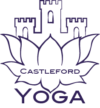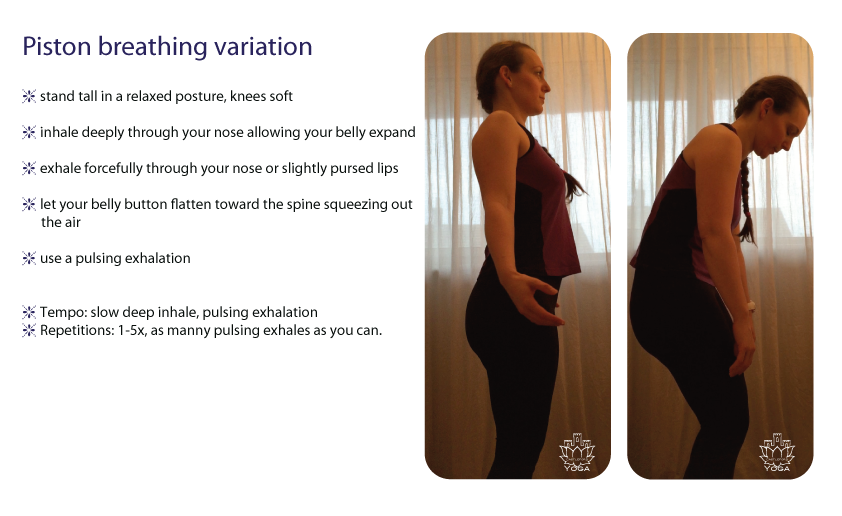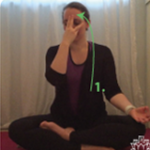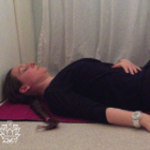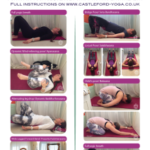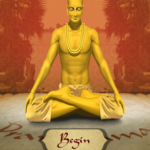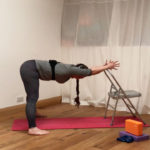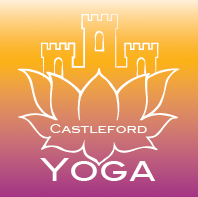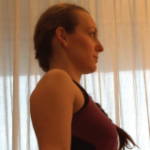
Experience how the breath affects the muscles of the body during yoga practice.
Did you know that if you work with your breath, some exercises are easier – such as breathing in when you lift into a Locust/ Shalabhasana which is a back extension, so it uses all the muscles along the back of the body. Or when you go into a Forward fold/ Utthansana and you exhale, it is easier to lower and soften into the position than when you breath in. The reason for this is, breathing naturally activates either musculature on the front or the back of the body.
Observations for the inhale:
If you breathe naturally and carefully observe, you will feel your body lengthening, growing taller and the muscles of the back are gently engaging, the ribs will expand and the collar bones rise just lightly at the end of the inhale. It might feel like you are becoming lighter and more alert.
Observations for the exhale:
On the exhale you’ll notice how your body softens, it becomes a little more relaxed, your shoulders may come forward slightly and the ribs sink; you’ll notice a faint rounding of the body forward into flexion. Here you will feel more grounded, relaxed and calm. This will not be obvious unless you practice the Piston breathing variation below to observe this in a more obvious way.
How you can apply this rule to yoga practice.
So a general rule is, when you go into an asana that is extension based/ back bending you want to “breath in” to switch on the muscles along the spine and the buttocks that help you get into that position. There can be exceptions though, maybe you are trying to mobilise the spine to get a larger range of movement during a Cobra, here you would want to “breath out” on the lift rather than breathe in, it helps the muscles along the spine to soften allowing you to arch back further than if the erectors/ muscles along the spine are engaged.
We now know that breathing in would stiffen the back of the body, helping all the muscles to engage/ contract. If you want to become stronger in your cobra holding the position with the back muscles rather than having all the body weight in the hands and arms you’ll want to “breathe in” as you lift and focus on having as little body weight as possible on your hands.
Test yourself: a good test to check if you have lifted to the range that your body can support with the strength of the back muscles is to lift the hands up, if you chest sinks to the ground a couple of inches you know that you still had lots of body weight in the hands and that the back muscles are not ready to support the extension position that you are capable of moving into from a mobility stand point.
The exhale can help you become more comfortable in any asanas that are working on hip or chest opening or hamstring stretching such as Janu sirsasana/ Head to knee pose or even Apanasan/ wind relieving pose, breathing out as the knees come to the chest helps you get a lovely stretch of the erector muscles and massages the gut.
Try this:
Lift one arm to the side as you Inhale and lower as you Exhale – how does this feel?
Now do the same thing lifting the arm as you Exhale and lower it on the Inhale – Does it feel any different?
If you didn’t notice any difference, try another couple of times observing closely.
You’ll notice the arm is heavier during the Exhale lift and lifts easily when you Inhale.
Are you ready to apply this to your practice?
In your next yoga practice, observe how the exhale helps you let go of tension or discomfort, this is even more powerful if you visualise the tension leaving your body as the air exits your nostrils – physically and mentally letting go.
Using the inhale to soak up strength, stamina and commitment in your standing and balancing postures, you’ll notice how much easier they will become.
The more you practice, the more you’ll notice how each asana/ posture is an interplay be tween strength and release – there will always be one side of the body that is stretching whilst the other side is switched on or strengthening. Like in the Cat – your are contracting the abdominal muscles and stretching the muscles along the spine, in the Cow you are doing the reverse – stretching the abdominal wall and contracting the muscles along the spine to get the mild extension. These two postures are usually practiced alternating back and forth as that helps you keep balance between the back and front of the body.
In our modern life, many of our movement patterns are one sided, flexed hand holding phones, flexed posture in standing looking at mobile phones or sitting at a PC.
It is worthwhile working a little more on extension for most people to counter act all the flexion patterns that happen everyday, though we need to keep an eye on the progress as you don’t want excessive extension through the body either – we want to have perfect balance of tension between the back and front of the body for perfect health.
Take this information and let it help you in your asanas as you keep developing your physical yoga practice with knowledge and compassion.
My challenge for you until I see you next week is to try the Piston breathing variation and then pick one of the exercises I have posted in previous weeks and see if you notice a difference when you use this new knowledge about working with the breath.
– instructions below in the image and a link to a video showing how the Piston breath looks like.
I hope you find this little exercise helpful, why don’t you drop me a line in a few days with an update on how it’s going for you?
Or ask further questions if they come up.
I always love hearing from you.
Namaste
Marie
